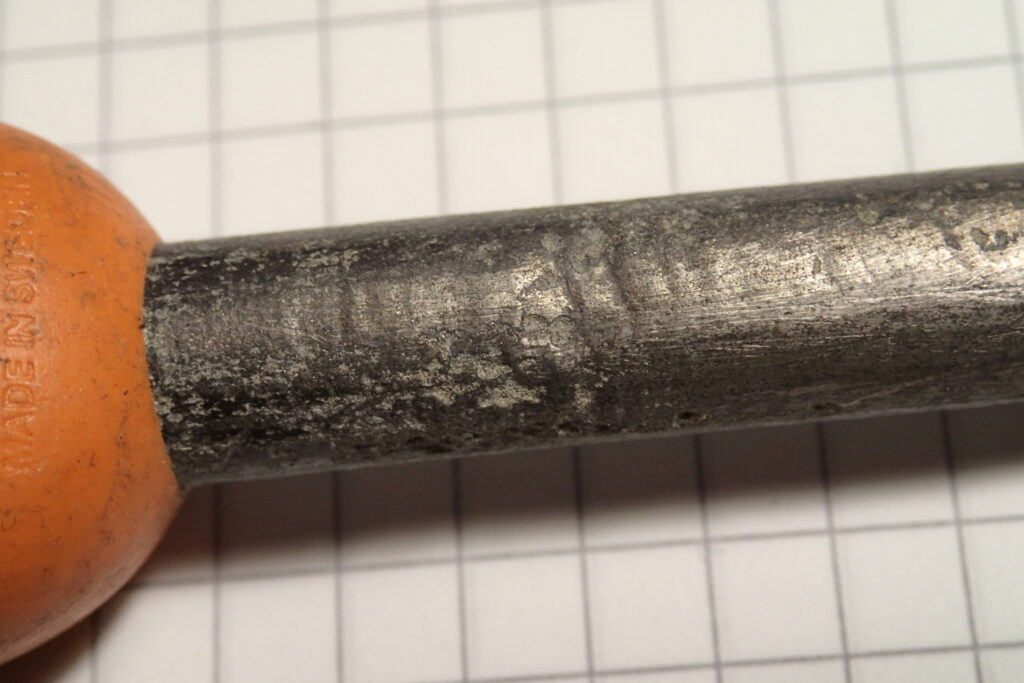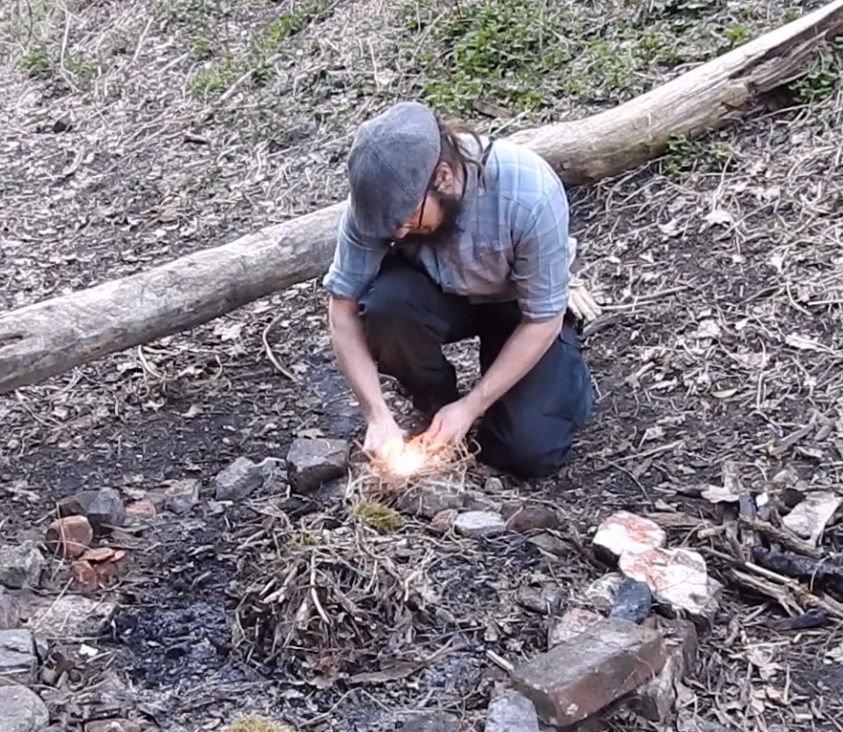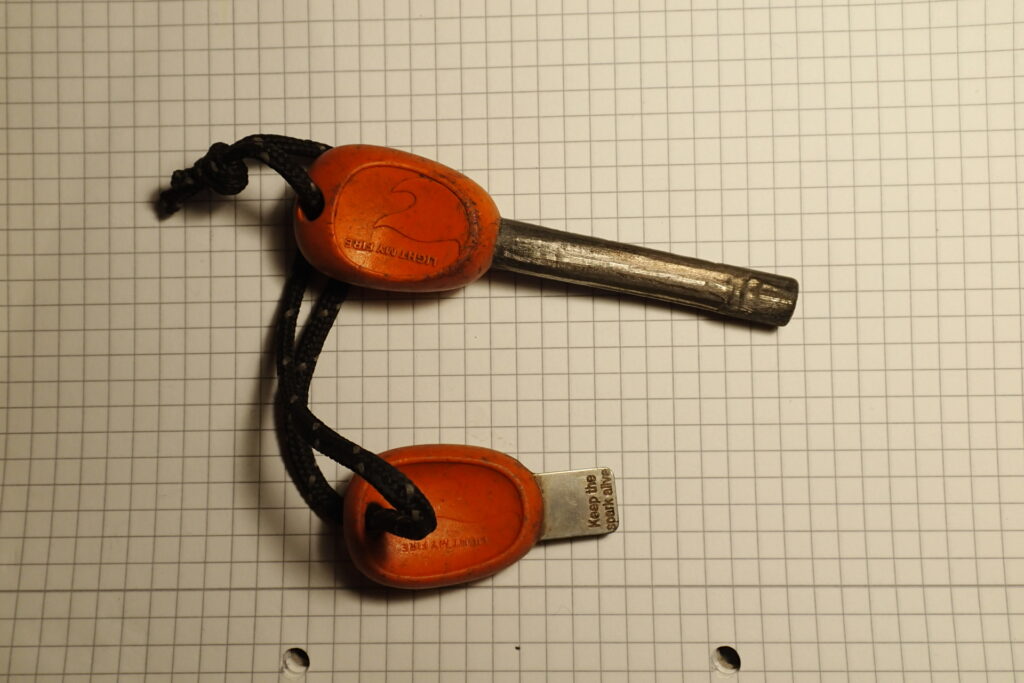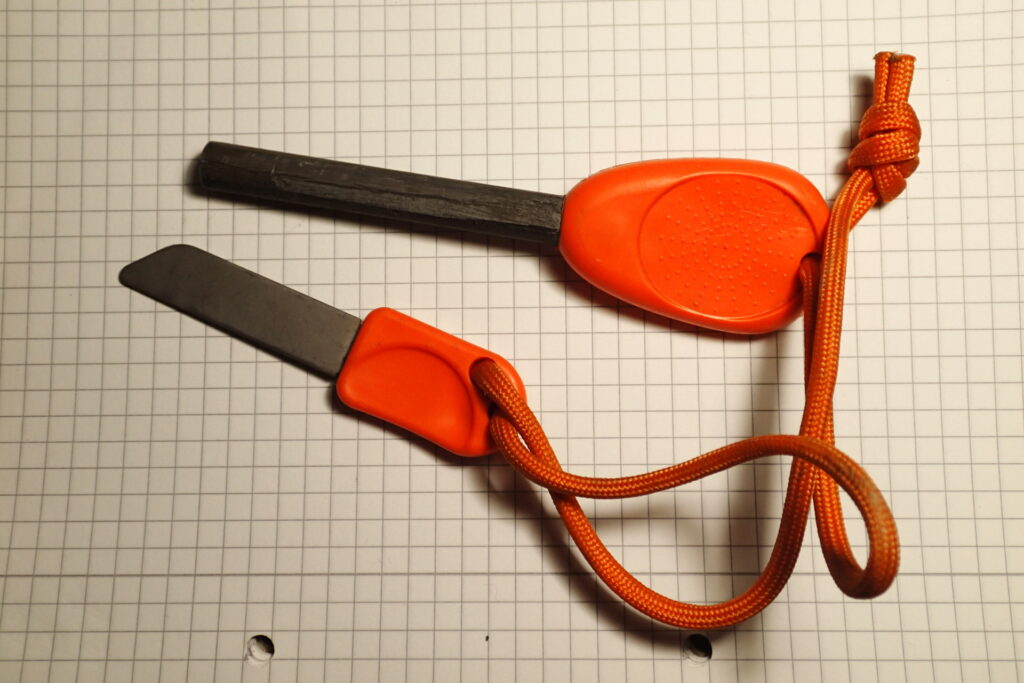Ferro rod, also called firesteel, is a great fire-lighting tool. It’s commonly used in the outdoor niche because of its durability. I covered the technique of using the ferro rod in my article on fire lighting (How to Start: Lighting Fire), and today I want to focus on the firesteel itself. What makes a good ferro rod? Which one should I buy to not waste my money?
But first — what is ferro rod made of?
The rod is made of ferrocerium — an alloy discovered in the first years of the 20th century, made mostly of iron and cerium, also containing some other additives, most commonly magnesium, neodymium and praseodymium. This alloy has a unique feature — it has a very low temperature of ignition. It means that you can ignite it easily with just a bit of intense friction. Ferrocerium is also commonly used in lighters as a flint.
The second part of a ferro rod set is a scraper, also known as a striker. It’s a piece of steel with a sharp edge, which is used to make ferrocerium sparks. In theory, it can be any material harder than the alloy, but it must have a sharp edge to make sparks. I never tried using a ferro rod with a non-steel striker, so it’s probably time to test it in practice.
So now, how to spot a good ferro rod? As there are only two parts of the set, we will tackle them separately.
The rod itself
A ferrocerium rod should be covered in some type of paint or other protective layer. Bare alloy can start to erode, small “craters” will appear in the eroded spots and they’ll make it harder to light a spark. If you have a choice between a thinner and a thicker rod, always choose the thicker one. Thin rods tend to break easily and get used up a lot quicker. Also, the weight-to-cost ratio is terrible with the thin ones — pay a dollar or two more and get yourself a lot better tool. The last thing is a handle. If the handle is poor (or missing), but the ferrocerium didn’t cost much, you can always get rid of the handle and make one yourself. If you buy a nice ferro rod with a decent handle, make sure it has indentations for your fingers — you want a firm grip when making sparks.

The scraper/striker
It should be made of steel (preferably carbon steel) thick enough to not bend easily. It should have a sharp or slightly downward-curving edge. If the striker is blunt, it won’t serve the purpose. If the striker is poor or missing, use the back side of your knife (if it has sharp edges of course). You can also use the blade of your knife, but that won’t be any good for your equipment’s longevity. It’s also important to have a finger-fitting handle for your striker.
If you have no good striker, don’t get comfortable with whatever crappy piece of metal you have — sharpen or replace it. A bad scraper makes the ferro rod useless. If you have a good scraper, you will be able to make any, even the cheapest ferrocerium rod shine.

Are expensive ferro rods better?
Yes and no. The rod itself can’t get a lot better than in the cheaper options, it can only be larger or smaller, and sometimes the alloy will have some different additives. The most important things you’re paying for are ergonomics and scraper quality. Firesteels with nicer handles and better strikers will generally be a lot more expensive.
I personally recommend starting with a good quality ferro rod from the mid-price range. Learn the technique well and decide if this is enough for you. If not, buy an expensive one, but concentrate on the striker when buying. You have to learn how to use your new, better striker, and then when your rod breaks or is used up, buy cheap rods online and use your expensive scraper with them — they’ll be as good as the expensive ones.


What if I don’t want to spend too much money on firesteel?
If you’re on a tight budget, buy a bunch of cheap rods online or in the local shop. Make handles for them by yourself with whatever you have — wood, horn, bone, plastic etc. Find some old file or other unwanted piece of carbon steel and make it into a scraper by sharpening and optionally bending the edge. With a bit of work you’ll be able to make a decent ferro rod, and if you turn out to be good at it you can also make some money selling hand-made firesteels online (if you do so, be sure to contact me — I’ll definitely check out your work).


